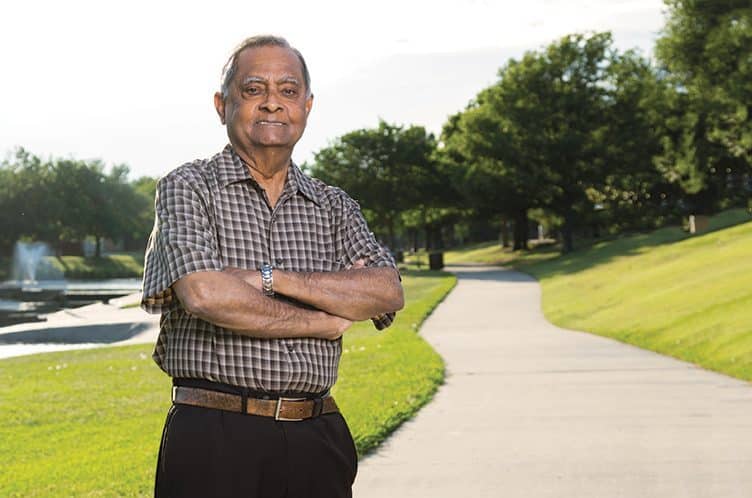Jithendrakumar “John” Kapadia has called Dallas home for more than 50 years. He and his wife, Rekha, raised their three children here and now enjoy spending time with their grandchildren. But as they grew older, increasing joint pain in their knees began to keep them from living the life they wanted.
“At 80 years old, I expected to have joint pain, but not so much that walking or driving a car was extremely painful,” John says. “I knew I had to try something to get relief from the pain, but I was resistant to having joint replacement surgery. When physical therapy and cortisone shots didn’t help enough, I began to consider it.”
Encouraged by a few of his friends who had successful knee replacements, John met with Diane Litke, MD, orthopedic surgeon on the medical staff at Methodist Richardson Medical Center, to discuss his options. She caught his attention when she suggested robot-assisted surgery.
Meet the Mako® robot
At first John was skeptical. Dr. Litke had asked him to consider being the first patient at Methodist Richardson to undergo knee replacement using the new Mako robot.
“When Dr. Litke first talked to me about the Mako robot, I wasn’t sure it was a good idea,” John recalls. “I decided to talk to my brother, who is a retired orthopedic surgeon in India. He explained that it wasn’t a robot doing the actual surgery but a machine that the surgeon would use to help guide their movements. He was very enthusiastic, so I decided to go for it.”
So how does Mako help? Using a CT scan of the patient’s joint, the Mako technology creates a 3D image of his or her bone anatomy. The surgeon then uses that image before and during the surgery to plan and to virtually balance the joint and achieve individualized placement.
“The Mako robotic arm–assisted technology helps surgeons provide patients with a personalized, more predictable surgical experience for knee [total and partial] and total hip replacement,” Dr. Litke explains. “We are able to create a patient-specific, preoperative plan that enables more accurate implant positioning, which is crucial to long-term success.”
WATCH: Some couples do everything together. The Kapadias both got knee replacements at Methodist Richardson Medical Center. Check out how Diane Litke, MD, used a robot to make a “perfect knee” for each of them.
Walking with confidence
Dr. Litke performed John’s total knee replacement surgery on a Wednesday, and he was up and walking the next day. His children joked that they hardly recognized his gait since he could walk straight and without a limp.
After seeing her husband recover so quickly and with very little pain, Rekha decided she, too, wanted to have the same procedure.
“The Kapadias are true success stories for the Mako robot and the power of its technology,” Dr. Litke says. “What I like best about Mako is that I can know that everything about the fit of the implant is perfect before I even begin the surgery. Because of this customization, John and Rekha have relief from joint pain and have the agility to keep up with those grandkids of theirs. That’s the kind of freedom joint replacement gives patients, and Mako makes it even better.”
Is mako right for you?
Find an orthopedic surgeon to discuss your options.

